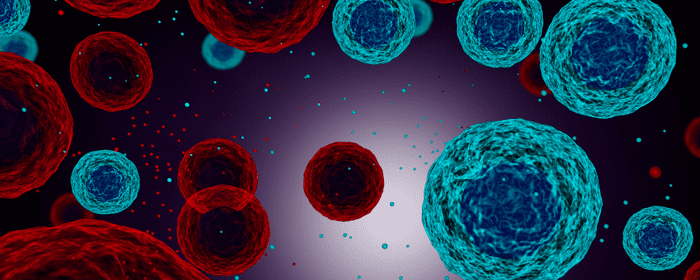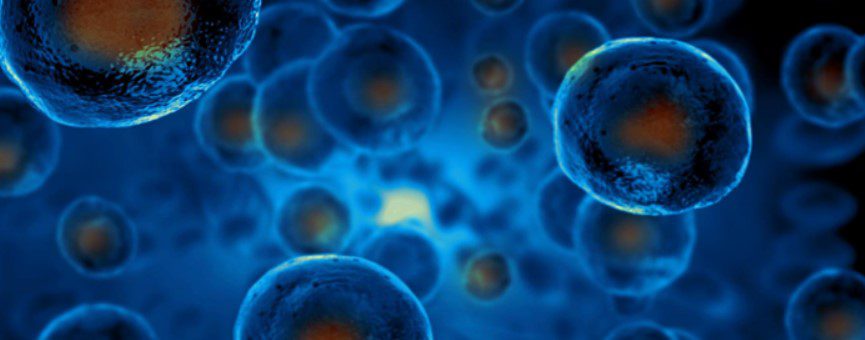
by admin | Jan 4, 2024 | Osteoarthritis, Exosomes, Mesenchymal Stem Cells, Stem Cell Research, Stem Cell Therapy
Osteoarthritis (OA) is a chronic joint condition that causes pain and lack of mobility through the progressive degradation of joint cartilage. While there are several current pharmaceutical, physical therapy, and surgical treatments to address the symptoms of OA, researchers are interested in developing new therapeutic treatment approaches to address the relentless progression of the condition.
Considering their documented biocompatibility, immunomodulatory properties, and ability to precisely target specific cells and tissues, exosomes have recently emerged as a promising therapeutic option as a drug delivery system (DDS) for the treatment of OA. Specifically, these exosome-based strategies have demonstrated a safe and effective way to enhance cartilage repair, mitigate inflammation, and alleviate the persistent pain associated with OA.
While the benefits of exosome-based DDSs have been demonstrated in numerous studies, according to the author of this review, the specific application of this option for the purpose of treating OA has not been sufficiently explored.
In this review, Lu et al. summarize the emerging developments surrounding exosome-based DDSs of OA and highlight the present challenges associated with this evolving therapeutic option.
Recent studies have demonstrated the benefit of using exosomes for the delivery of drugs designed to treat OA. Specifically, researchers have found that exosomes derived from mesenchymal stem cells (MSCs) are able to be effective carriers for the delivery of specific molecules that lead to the promotion of chondrogenesis and improvement in cartilage regeneration. These same exosomes have also demonstrated themselves to be effective carriers for the localized delivery of anti-inflammatory drugs known for their potent anti-inflammatory and immunosuppressive effects.
Other studies show the potential of exosomes as an effective way to deliver growth factors to the affected joint in a targeted and sustained manner. The same exosomes have also demonstrated promise as a platform for gene delivery to areas affected by OA; a few of the notable advantages include the ability to safeguard genetic material from degradation and enable targeted delivery to specific cells and tissues.
While there is seemingly unlimited potential for using exosomes as DDSs in OA treatment, Lu et al. also call attention to several technical challenges and limitations that need to be addressed in order to fully maximize their potential and to ensure their safe application. These challenges and limitations include figuring out how to obtain a consistent supply of high-quality exosomes, developing effective methods that allows for efficient loading and controlled release of therapeutic molecules within exosomes, and a current lack of comprehensive long-term data regarding the safety and biocompatibility of exosome-based therapies.
Despite these challenges and limitations, the authors conclude that exosomes have emerged as highly promising candidates for drug delivery in OA therapy and offer numerous advantages over conventional delivery systems.
Source: Jun Lu, Yan Zhang, Xinquan Yang, Hongmou Zhao, Harnessing exosomes as cutting-edge drug delivery systems for revolutionary osteoarthritis therapy, Biomedicine & Pharmacotherapy, Volume 165,2023,115135, ISSN 0753-3322, https://doi.org/10.1016/j.biopha.2023.115135.

by Stemedix | Dec 11, 2023 | Stem Cell Therapy, Alzheimer’s Disease, Autoimmune, Health Awareness, Osteoarthritis, Parkinson's Disease
Treatment of injuries and damage to organs and other tissues as a result of the aging process or conditions has often relied on managing symptoms. By offering painkillers and steroids, healthcare providers can keep you more comfortable, but they are not targeting the cause of the problem. This means you have to keep relying on medications. One option more people are exploring is regenerative medicine, also known as stem cell therapy. This type of regenerative medicine offers the chance to treat the underlying cause of the issue so that you can achieve lasting relief. In this article we will discuss how does stem cell therapy work?
What Is Stem Cell Therapy?
Stem cell therapy utilizes stem cells, which are those that create specialized cells. They can regenerate damaged or dying cells. Although you retain stem cells throughout your life, the aging process can make them less effective. This aging can lead to injuries that don’t heal completely, causing chronic pain and many other problems.
The goal of stem cell therapy is to amplify your body’s natural healing processes. To do this, it relies on stem cells.
In stem cell therapy, these cells are often harvested from the patient’s own body or from donors, and then administered to the affected area or systemically. The goal is to encourage tissue regeneration, repair damaged cells, and promote healing. Stem cells can differentiate into the specific cell types needed to replace or repair damaged tissues, making them a promising treatment for a wide range of conditions.
Stem cell therapy has shown potential in treating conditions such as heart disease, neurological disorders (e.g., Parkinson’s and Alzheimer’s disease), autoimmune conditions, and orthopedic injuries.
Benefits of Stem Cell Therapy
Stem cell therapy is a less invasive option than many other therapies. It requires the removal of stem cells from fat or bone marrow and then the injection of the prepared stem cells at the site of the damage. This not only makes it a viable option for those who can’t undergo surgery, but it also means the recovery process is shorter.
Another benefit of stem cell therapy is that it helps reduce inflammation. When you get injured, your body responds by causing inflammation to prevent the spread of damaging agents while also helping remove pathogens and cell debris. Inflammation also helps prepare the area for the repair process.
In some instances, however, inflammation doesn’t go away, leading to chronic pain. Inflammation also makes it more difficult for the wound to heal because the area is not receiving enough blood.
Stem cell therapy helps reduce this inflammation, allowing oxygen and nutrients to make their way to the damaged area. Less inflammation results in less pain.
Stem cell therapy is also a quick procedure. It can be done as an outpatient option, and it doesn’t require general anesthesia. Because most people benefit from adult stem cells, the procedure also avoids the need to worry about rejections or allergic reactions.
What to Expect from the Stem Cell Therapy Procedure
The first thing you will need to do is reach out to your healthcare provider to see if you are a good candidate for stem cell therapy. Your provider will go through your medical history to see which types of stem cells you can benefit the most from. The kind of condition or injury you have will impact this choice.
If you’re using your own stem cells, your healthcare provider will collect a sample from your bone marrow or fat. They then process them in a laboratory to isolate and concentrate them. In some cases, the process can involve centrifugation, filtering, and other options to help collect the highest number of stem cells.
The next step is receiving the stem cells, which can take place intravenously, with an injection, as well as other administration techniques.
After you receive the stem cells, your healthcare provider will monitor you to ensure there are no complications. They will also schedule follow-up phone calls to monitor how you are doing post-treatment.
Most people can get right back to their daily activities with some minimal post-treatment guidelines without having to worry about long recovery times.
Available Stem Cell Treatments
How does stem cell therapy work & what are the available treatments? Stem cells can help treat a variety of conditions. It’s helpful in treating cartilage regeneration and osteoarthritis because the stem cells can differentiate into chondrocytes, which are cells that maintain cartilage.
It’s also an option that can help with scar reduction and wound healing. For this procedure, stem cells derived from fat cells are a good option. They can help with tissue regeneration, potentially leading to healing chronic wounds and even the prevention of scarring.
Stem cell therapy is also a good choice for neurodegenerative issues. It can help replace neurons and provide neuroprotective benefits, potentially leading to slowing down the disease’s progression.
Stem cell therapy may also target ligament and tendon injuries, which are common in people who are very active. This type of therapy can help speed up the recovery process and might even be able to prevent the development of chronic pain issues that can affect mobility.
Another way stem cell therapy is able to help is by treating autoimmune diseases. Most autoimmune diseases are impacted by inflammation, so an option like stem cell therapy, which helps reduce swelling, can be helpful.
Choosing Stem Cell Therapy for Lasting Results
Stem cell therapy offers hope for the treatment of many types of conditions. By targeting the cause of pain and chronic injuries, like inflammation, you can avoid relying solely on pain medications, which only mask symptoms. Stem cell therapy makes it possible to have available options to help manage orthopedic injuries, neurodegenerative conditions, and much more.
If you want to learn more about how does stem cell therapy work and not sure whether stem cell therapy is a good option for your needs, speak with a regenerative medicine specialist. They can let you know if you are a good candidate.

by admin | Oct 18, 2023 | Osteoarthritis, Peptides
Osteoarthritis (OA) is a progressive joint disease that occurs as a result of the cartilage that cushions the bones wearing down over time. Currently, it is estimated that over 500 million people worldwide are affected by OA.
Clinical OA studies have shown that when the condition is linked to metabolic syndrome, OA often results in more significant joint damage and overall disability. Additionally, these studies have also demonstrated a link between metabolic syndrome and OA, including a higher likelihood of dyslipidemia – an imbalance of lipids including cholesterol, low-density lipoprotein cholesterol, (LDL-C), triglycerides, and high-density lipoprotein (HDL).
In this single-arm, open-label, prospective, non-randomized pilot study, Liu et al. evaluated the efficacy and safety of pentosan polysulfate sodium (PPS) for dyslipidemia and knee OA-related symptoms.
PPS has exhibited potential treatment benefits for OA in previous studies. Specifically, animal models have shown PPS to reduce cholesterol and triglyceride levels while also exhibiting anti-inflammatory properties. These studies have also demonstrated that PPS demonstrates properties that might be related to the treatment benefit for OA and dyslipidemia and could potentially improve plasma lipid levels, clinical assessments, and cartilage metabolism.
At the conclusion of this study, the authors observed a statistically significant decrease in LDL and a significant reduction in knee OA-related symptoms, including joint-related pain and stiffness.
The findings of this study showed promising treatment effects of PPS for improving dyslipidemia and clinically observed symptoms related to knee OA (including knee pain, stiffness, and disability). Although this study found that PPS significantly reduced blood levels of total and LDL cholesterol in humans (a finding previously confirmed in animal models), the authors also pointed out that no significant change was found in the primary outcome of triglyceride levels.
While PPS, when administered in a dose of 10 mg/kg, was demonstrated to be safe and well tolerated, the authors point out that this was the first known study investigating the efficacy and safety of oral PPS in people with dyslipidemia and knee OA.
Liu et al. also highlighted a few limitations of this study, including the small sample size of 38 participants which limited the interpretation of any treatment effect in the context of such variations. Other confounding factors identified in this study included various lifestyle changes that occurred over the course of the 26-week study.
The authors also pointed out that, while significant reductions in pain subscales were observed, the changes were similar in magnitude to changes observed over similar periods on the placebo arm of recent placebo-controlled knee OA pharmacological randomized clinical trials (RCTs).
To further validate the findings of this study, Liu et al. call for a larger RCT with an appropriate control group.
The authors conclude that oral treatment with PPS demonstrated treatment effects to improve dyslipidemia and clinical symptoms related to knee OA and that further studies in this area are necessary.
Source: The effect of pentosan polysulfate sodium for improving … – PubMed.” 7 Feb. 2023, https://pubmed.ncbi.nlm.nih.gov/36879559/.

by Stemedix | Oct 2, 2023 | Osteoarthritis
Arthritis can take away some of your favorite activities and make daily living very uncomfortable or even painful. When it comes to managing this condition, there are certain triggers that you should be aware of.
Find out what parts of your diet might be contributing to your osteoarthritis symptoms. You can take control of your pain and minimize it once you have this important knowledge.
The Science Behind Arthritis
There are two main types of arthritis. Rheumatoid arthritis is considered an autoimmune disease and is different from osteoarthritis. On the other hand, osteoarthritis is caused by the breakdown of joint cartilage.
Your bones are surrounded by a fleshy material called cartilage, which provides them with cushion and flexibility. This is what allows you to move around, bend down, and absorb impact when you’re walking or running.
Many people call osteoarthritis a “wear and tear” disease because it often results from overuse and strain on your joints. Aging is a leading cause of osteoarthritis — your body can only maintain healthy joints for so long.
After many long years of movement, your joint cartilage can start to disintegrate. Some people develop bone spurs that harden and cause lots of discomfort.
Once your bones lose the support and cushion of cartilage, you may experience joint stiffness and pain. Your mobility may suffer, making it hard to complete normal daily activities. Osteoarthritis can be debilitating if left untreated.
Food, Inflammation, and Osteoarthritis: What’s the Link?
You might be wondering how your diet can affect your joint pain. The things you eat (or don’t eat) can have a strong impact on your overall comfort levels, especially if you struggle with arthritis symptoms regularly.
Certain foods contain inflammatory compounds that promote swelling and discomfort in your body. If you already suffer from osteoarthritis, this extra inflammation will cause more pain and discomfort, which can worsen existing mobility issues.
On the other hand, some foods contain anti-inflammatory compounds that help fight inflammation and discomfort. These are the foods you want to regularly incorporate into your diet.
Learn which foods to avoid if you suffer from osteoarthritis so you can remain comfortable and active around the clock.
Avoid High-Sugar Foods and Drinks
Foods and beverages with high sugar content are known for their pro-inflammatory effects. Refined sugars cause your body to release compounds called cytokines, which have inflammatory effects on your cells and tissues. This can worsen your joint pain from osteoarthritis.
Additionally, inflammation may contribute to further breakdown of the cartilage between your joints. If you want to protect your health while living with this condition, avoid packaged and processed snacks and drinks that have high sugar content.
Some examples of high-sugar foods and drinks include:
- Cookies
- Candies
- Cakes
- Sodas
- Sweetened coffee drinks
- Frozen desserts
- Energy drinks
Avoid these foods to increase your comfort and decrease your osteoarthritis symptoms.
Simple Carbs: White Bread, Rice, and Other Refined Foods
Along with added sugar, simple carbohydrates are found in many “white” foods. This means that foods like white bread, white rice, and potato chips are loaded with simple carbs that could contribute to worsening symptoms.
Simple carbohydrates affect your body differently than complex carbs, which are good for your health. Similar to refined sugars, simple carbs have pro-inflammatory effects and can lead to rapid weight gain. The more you weigh, the more pressure your joints have to deal with every day.
Avoid simple carbs and opt for whole-grain foods like brown rice instead.
Saturated Fat Causes Weight Gain and Joint Strain
Foods that are high in saturated fats are bad for your health. Many researchers and medical bodies believe that eating a diet high in saturated fats exponentially increases your risk for heart disease, obesity, and diabetes.
When you eat too much saturated fats, you’re likely consuming more calories than you burn. This can cause you to pack on extra pounds that are detrimental to your health. Excess weight puts strain on your joints and cartilage, which makes osteoarthritis symptoms far worse.
Opt for healthier fats instead from sources like:
- Olive oil
- Fish
- Yogurt
- Hummus
- Avocado
- Nuts and seeds
These sources of fat will benefit your health and help you avoid debilitating osteoarthritis symptoms. Look into an anti-inflammatory diet to potentially help.
Don’t Overdo the Fast Food and Fried Treats
Eating fried foods is never good for your heart health, joints, and waistline. While these foods can be enjoyed in moderation, it’s important to prioritize home-cooked meals over fried and fast foods.
Fast food is often high in simple carbs, saturated fat, and sodium. These compounds contribute to inflammation and weight gain, which, in turn, causes more joint pain and discomfort. Many people with osteoarthritis experience more joint pain and stiffness the day after eating fried and fast foods.
Instead of eating foods fried in oil, try baking foods like vegetables and fish with a light coating of olive oil spray. This will reduce the amount of calories in your meal and help you avoid fried treats — a win-win situation for your joint health.
Limit Your Dairy Intake
Dairy has been a part of the standard American diet for many years. However, eating too much dairy in one sitting can spell bad news for your health. Osteoarthritis can flare up if you eat excessive amounts of dairy from low-quality sources.
When dairy is mass-produced, it goes through a process called pasteurization. This process removes many harmful bacteria that can get into raw cow’s milk, but it doesn’t eliminate the inflammatory compounds.
Human digestive tracts were not originally designed to break down lactose, a key compound in cow’s milk. Other compounds in cow’s milk can worsen your health as well. This means that when you have a condition like osteoarthritis, it’s best to limit your dairy intake.
Managing Your Life with Osteoarthritis
Making dietary changes can significantly improve your quality of life if you’re living with osteoarthritis. While you can’t always avoid developing this condition, you can live a satisfying life and manage your symptoms.
If you want to protect your health and reduce the amount of strain on your joints, consider avoiding these common osteoarthritis triggers.

by admin | Sep 20, 2023 | Athletic Injury, Osteoarthritis, Pain Management
Currently, 1 in every 4 adults suffer from chronic knee pain; this represents a 65% increase over the last 20 years. While knee pain can be caused by several causes, including meniscus tears, tendinosis, sprains, rheumatoid arthritis, and lupus, osteoarthritis (OA) remains the most common contributor to this condition.
In this study, Lee and Padgett evaluate the use of the peptides BPC157 and thymosin-beta-4 (TB4) for the treatment of knee pain. Specifically, as part of this study, 17 patients received peptide therapy consisting of BPC157 or a combination of BPC157 and TB4 injections for their knee pain.
It is estimated that the human body has nearly 300,000 peptides. These peptides consist of chains of amino acids that range from 2 to 100 amino acids in length. One specific peptide, BPC157, when isolated, has demonstrated restorative properties that have helped in the repair of tendons, ligaments, muscles, nerves, and bone fractures. BPC157 has also been found to promote recovery from traumatic brain injury (TBI), reduce blood clots, and protect the liver.
Because of its reported acceleration of recovery from ruptured tendons, BPC157 has also become a favored therapeutic option by athletes looking to speed up the healing of their injuries. Prior to this study, no study using BPC157 in humans has been published, nor has this peptide received US Food and Drug Administration (FDA) approval in the United States.
TB4 is FDA-approved and a naturally occurring peptide that originates in the thymus gland. TB4 possesses a range of healing and regenerative properties, including accelerating recovery from skin wounds, TBI, stroke, and multiple sclerosis. TB4 has also been shown to reduce inflammatory markers and pain.
The patients involved in this study either received only an intra-articular injection of BPC157 or a combination of both BPC157 and TB4 injections.
As a follow-up, and as part of this retrospective study, the author followed up with patients between 6 months and 1 year after receiving peptide injections in their knee. Of those receiving only the intra-articular injection of BPC157, 91.6% reported significant improvements in knee pain while 75% of patients who received both peptides showed significant improvement.
While treating knee pain with BPC157 and TB4 has demonstrated potential for future therapeutic options, the author calls for additional larger studies to better understand improvements in structural changes and increased collagen production in patients with OA-induced knee pain.
Lee concludes that this retrospective study demonstrates that BPC157 has been shown to help reduce knee pain and have prolonged effects lasting over six months, a significant benefit when compared to the documented short-lived results of steroid treatment. Source: “Intra-Articular Injection of BPC 157 for Multiple Types of Knee Pain.” https://pubmed.ncbi.nlm.nih.gov/34324435/.

by admin | Jul 19, 2023 | Mesenchymal Stem Cells, Osteoarthritis, Stem Cell Therapy
Osteoarthritis (OA) is the most common and widespread form of arthritis, affecting an estimated 655 million people worldwide. Occurring as a result of cartilage degeneration, OA is a progressive degenerative disorder that most commonly affects the joints of the hands, hips, knees, and spine.
Although OA can affect anyone, it is most commonly observed in older patients. In fact, all individuals over the age of 65 are believed to demonstrate some clinical or radiographic evidence of OA.
While surgical and pharmaceutical treatment options for OA exist as a way to manage the symptoms and progression of the disease, treatment for the restoration of normal cartilage function has yet to be achieved.
Considering the tissue of joint cartilage is composed primarily of chondrocytes found in bone marrow-derived mesenchymal stem cells (BMSCs), using these specific stem cells appears to have significant potential for use in the therapeutic regeneration of cartilage.
In this review, Gupta et al. evaluate the advances in using BMSCs and their therapeutic potential for repairing cartilage damage in OA. Evaluating current research, the authors point out that one of the key characteristics of MSCs, including BMSCs, is that they are generally hypoimmunogenic and possess immunosuppressive activity, suggesting that BMSCs could be used as allogeneic applications for cartilage repair.
Preclinical models of OA have also demonstrated that the effects of MSC transplantation have been effective for cartilage repair. Additionally, clinical models have reported on the safety and positive therapeutic effects of MNSC administration in patients with OA.
The authors point out that while the exact mechanism by which BMSCs regenerate articular cartilage in patients with OA is not clear, their ability to induce proliferation and tissue-specific differentiation appears to aid in the repair of damaged cartilage.
The ability of BMSCs to migrate and engraft onto multiple musculoskeletal tissues and differentiate at the site of injury while demonstrating anti-inflammatory and immunosuppressive properties demonstrate their potential as a therapeutic treatment for degenerative diseases like OA.
While the information provided in this review demonstrates the potential of BMSCs to support treatment and recovery from the damage caused because of OA, Gupta et al. call for additional clinical studies to assess the curative properties and long-term outcome of using MCSCs for the treatment of OA before they can be used routinely as a clinical treatment for the condition.
Source: “Mesenchymal stem cells for cartilage repair in osteoarthritis – PMC.” 9 Jul. 2012, https://www.ncbi.nlm.nih.gov/pmc/articles/PMC3580463/.







 St. Petersburg, Florida
St. Petersburg, Florida
